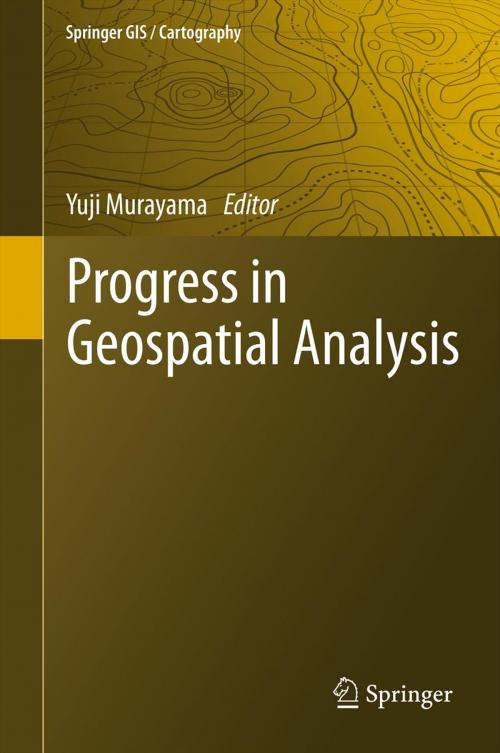| Author: | ISBN: | 9784431540007 | |
| Publisher: | Springer Japan | Publication: | July 6, 2012 |
| Imprint: | Springer | Language: | English |
| Author: | |
| ISBN: | 9784431540007 |
| Publisher: | Springer Japan |
| Publication: | July 6, 2012 |
| Imprint: | Springer |
| Language: | English |
This book examines current trends and developments in the methods and applications of geospatial analysis and highlights future development prospects. It provides a comprehensive discussion of remote sensing- and geographical information system (GIS)-based data processing techniques, current practices, theories, models, and applications of geospatial analysis. Data acquisition and processing techniques such as remote sensing image selections, classifications, accuracy assessments, models of GIS data, and spatial modeling processes are the focus of the first part of the book. In the second part, theories and methods related to fuzzy sets, spatial weights and prominence, geographically weighted regression, weight of evidence, Markov-cellular automata, artificial neural network, agent-based simulation, multi-criteria evaluation, analytic hierarchy process, and a GIS network model are included. Part three presents selected best practices in geospatial analysis. The chapters, all by expert authors, are arranged so that readers who are new to the field will gain an overview and important insights. Those readers who are already practitioners will gain from the advanced and updated materials and state-of-the-art developments in geospatial analysis.
This book examines current trends and developments in the methods and applications of geospatial analysis and highlights future development prospects. It provides a comprehensive discussion of remote sensing- and geographical information system (GIS)-based data processing techniques, current practices, theories, models, and applications of geospatial analysis. Data acquisition and processing techniques such as remote sensing image selections, classifications, accuracy assessments, models of GIS data, and spatial modeling processes are the focus of the first part of the book. In the second part, theories and methods related to fuzzy sets, spatial weights and prominence, geographically weighted regression, weight of evidence, Markov-cellular automata, artificial neural network, agent-based simulation, multi-criteria evaluation, analytic hierarchy process, and a GIS network model are included. Part three presents selected best practices in geospatial analysis. The chapters, all by expert authors, are arranged so that readers who are new to the field will gain an overview and important insights. Those readers who are already practitioners will gain from the advanced and updated materials and state-of-the-art developments in geospatial analysis.















